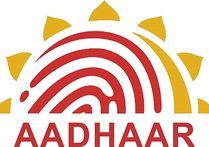Since the past few days, drones are much into news across the world. In the current pandemic, drones are being used to support the government agencies in controlling Covid-19 by monitoring the crowd, making announcements, and spraying disinfectants.
 In India, as per the existing drone regulations (CAR Section-3 Series X Part I), issued in August 2018, only a drone with a UIN (Unique Identification Number) is allowed to fly after permission is taken from the Digital Sky Platform. The platform is currently in the Beta version and permissions are being given only to fly in 6 small remote areas for testing purposes.
In India, as per the existing drone regulations (CAR Section-3 Series X Part I), issued in August 2018, only a drone with a UIN (Unique Identification Number) is allowed to fly after permission is taken from the Digital Sky Platform. The platform is currently in the Beta version and permissions are being given only to fly in 6 small remote areas for testing purposes.
Most of the current operations are not in line with the country’s existing drone policies, but flying drones for critical services would not be possible while complying with these rules. Thus, earlier this week, the Ministry of Civil Aviation (MoCA) and Directorate General of Civil Aviation (DGCA) have launched a new platform, GARUD (Government Authorization for Relief Using Drones). It allows any government department to fill the form and take conditional exemption from the existing regulation to fly drones for surveillance, aerial photography, and public announcements.
Who can apply for the exemption?
An entity under Union Government, State Government, District Administrations, or Government Institutions will be able to apply for the exemption and will be called ‘Authorised Entities’. They’ll be able to use their drones or can take third party services, but these authorized entities have to supervise all the operations and will have to take responsibility for the custody and security of drones along with covering third-party liabilities.
What drones are allowed to fly?
Only a battery-operated rotary-wing drone, weighing less than 25 Kg, which has either a UIN or a Drone Acknowledgement Number (DAN) is allowed to fly. It shall not fly above 200 feet Above Ground Limit (AGL) and should stay within the Visual Line of Sight (VLoS). The drone should not be used to pick-up or drop any substances (it excludes spraying of disinfectants and delivery of medical supplies) and should be flown only in clear weather conditions. Later, within 7 days of flight, all flight details should be uploaded on the Digital Sky Platform.
Grey areas
DANs were issued to the operators who declared their non-NPNT (No Permission No Take-off) compliant drones in the month of January to DGCA. The window was open only for 18 days and not every drone in the country was registered due to either lack of information or technical glitches. Few of the drones that are flying in the crises are not having either UIN or DAN. Will they be issued DANs now or will they not be allowed to fly anymore?
The public notice issued by MoCA talks about certain area restrictions to be considered while applying the permission for operation. It is not clear how these authorized entities will check for the restricted areas. Either they already have the information of these restricted areas or if not, then probably DGCA will modify the area marked in the application if it overlaps with any restricted area because the area is not publically available for the operators flying in the field.
Overall, the potential of the drone industry is visible to many in recent times. Most of the startups in the industry are helping out the government with all the tech they have. FICCI, in their recommendations to the central government, has suggested for blanket exemptions for all the bodies working in the crises till December 31, 2020. They have also recommended relaxations on Beyond Visual Line of Sight (BVLoS) operations and many more. It would be interesting to see if the year 2020 will bring any change in the existing drone policies of India.
For more Information visit our site :www.algopixel.tech






